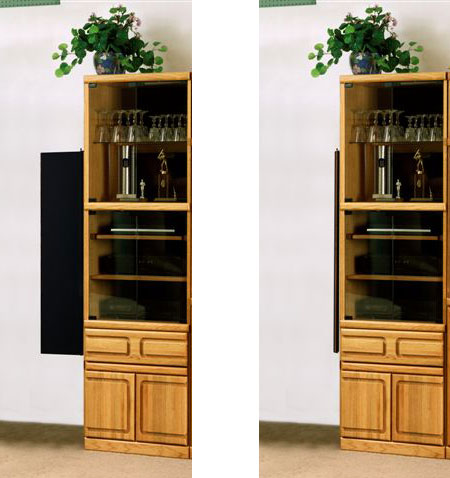Magnepan MMG Speaker System Features & Setup
You won't find the MMG W and MMG C in stores. They're available only by mail order directly from the company. (Other than the MMG line, all other Magnepan products are available through dealers.) Don't be nervous, they have a 60-day satisfaction-or-your-money-back guarantee—plus Magnepan may have just about the most helpful support staff you'll ever deal with.
The MMG W is 38.25 inches tall, 10.25 inches wide, and only 1 inch deep. It contains a single planar-magnetic panel that runs the height of the speaker. In case you're unfamiliar with planar-magnetic technology, it's simply a different way to vibrate air than the more-common "drivers in a box" approach. Magnepan uses a thin sheet of polyethylene terephthalate (PET), to which are attached thin conductive strips. The PET sheet forms a geometric plane, hence the term "planar."

The output signal from an amplifier—which is an alternating current that corresponds to the sound it represents—is applied to the conductive strips, which are alternately attracted to and repelled by a lattice of permanent magnets placed near the sheet. Thus, the entire panel vibrates and becomes the radiating surface of the speaker. In addition, the panel is a dipole, meaning that it radiates the sound from the front and back of the speaker.
The MMG Ws are extremely light, so the mounts that affix them to the wall are unobtrusively small. They are also hollow, so the hard-wired tails extending from each panel can—must—be routed through them. The mounting hardware is essentially a pair of L-shaped hinges, allowing the speakers to be left flat against the wall when the system is not being used. The panels can be "opened" like a door to put them in the listening position.
The on-wall mounting scheme means that one edge of the speaker is near the wall (technically called "near-boundary"), while the other edge is rotated to focus the speaker's front wave toward the listening area. This near-boundary placement enables such a small transducer to sound relatively full. Magnepan rates the MMG W's low-end drop-off at around 100Hz. That means you must use a subwoofer and an A/V receiver or pre/pro with bass management to approach full-range response.
As with most center speakers, the MMG C isn't flat. To achieve better horizontal dispersion, the planar panel is curved, so the MMG C is mounted within a bowed framework measuring 36 inches wide by 9 inches tall and 5.25 inches deep at its deepest; the narrow edges are only 2.25 inches deep. In my home theater, the MMG C fits nicely under my Stewart GrayHawk screen on top of my Polk PSW650 subwoofer, needing only a pair of tall Tiptoes under the front to aim the sound earward.
The MMG W and MMG C have a nominal impedance of 5 ohms, which shouldn't cause problems for most well-built A/V receivers. Over the years, I have received e-mails from many readers concerned about this. The best guideline I can offer for evaluating whether your receiver can drive them is simple: If the amplifier's output into an 8-ohm load doubles into a 4-ohm load, it will drive these speakers with no problems. Quality A/V receivers have come a long way since I first auditioned the MMG Ws, and I haven't run into any that have been thwarted by the Maggies in the last five years.
(Editor's note: According to Magnepan, a high-end, dedicated power amp might be able to actually double its power output into 4 ohms compared to its power output into 8 ohms, but no A/V receiver can do this. The best you can hope for is a 30-40 percent increase in power when moving from 8 to 4 ohms. Even so, any good AVR that touts its ability to drive 4-ohm loads should be fine with the MMGs.)
When it comes to speaker placement, the problem with almost all theories is that they assume perfect symmetry in the room and a certain inflexibility on the listener's part. But real rooms, even dedicated A/V rooms like mine, are seldom perfect or symmetrical. By playing around with how the MMG Ws are angled from the walls, I found I could mitigate any problems, such as the proximity of one wall on the right side of my screen and the greater distance to the wall on the left.
Once I got the angles right, I came up with what I call my "string theory." I stapled a piece of string to the bottom of each MMG W and the wall behind it. By pulling the MMG W out until the string is taut, I have a quick and repeatable way to ensure the optimum balance, after, say, a cat rampage or the maid's day in.
You might still need to calibrate the channels a tad more carefully than you would with "perfect" placement or five identical full-range speakers, but the results repay such care. Of course, this includes getting the hand-off between subwoofer and MMGs correct. In my A/V room, I found that using multiple subs arranged asymmetrically with the room worked better than a single sub driven harder.
























































